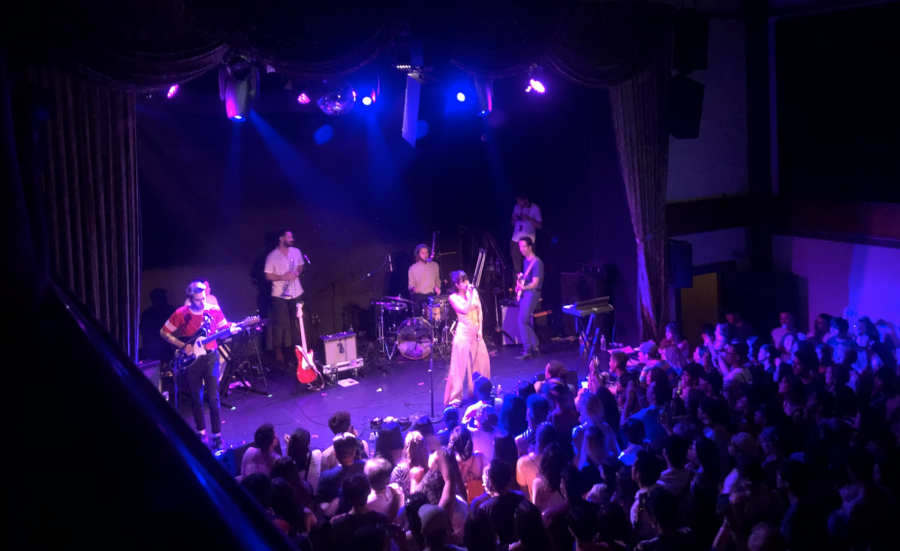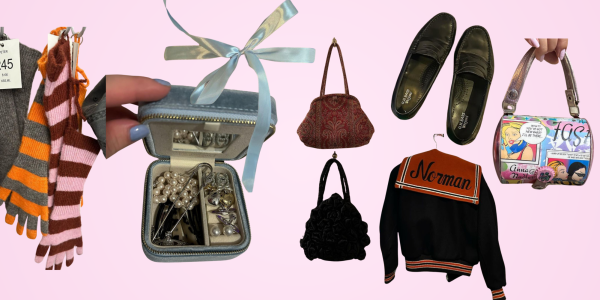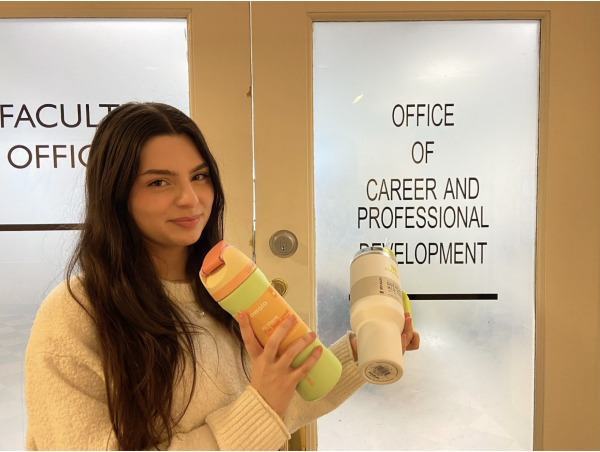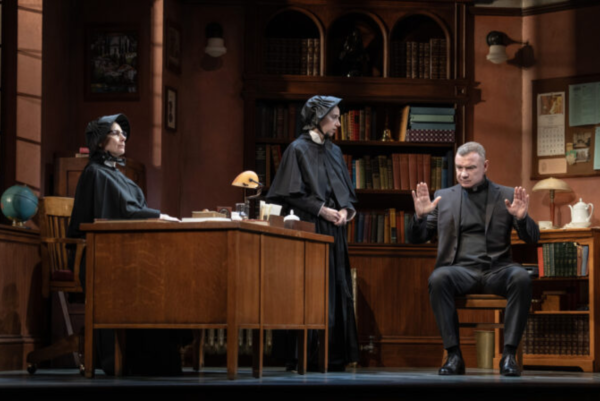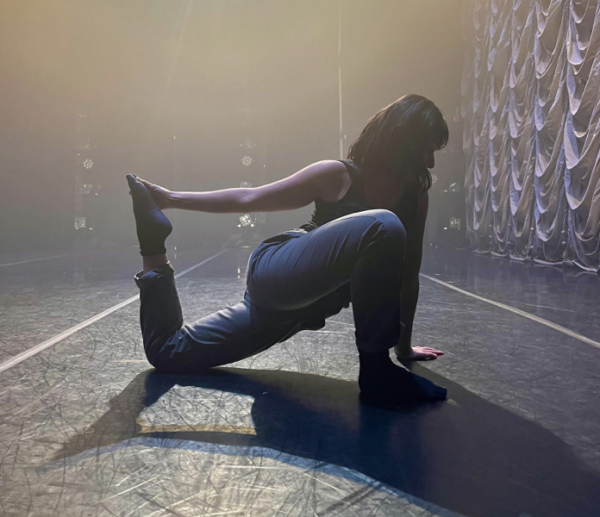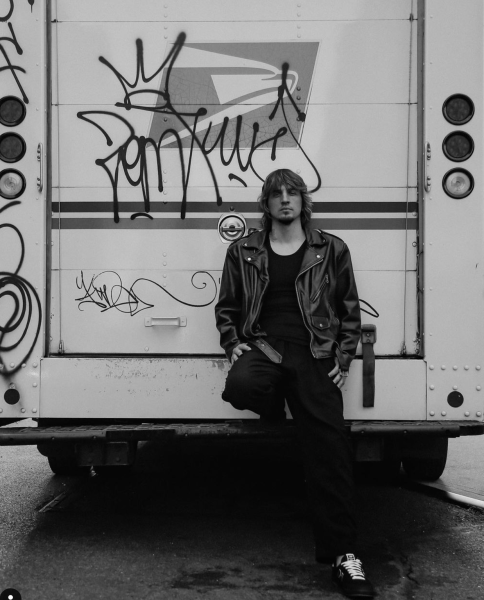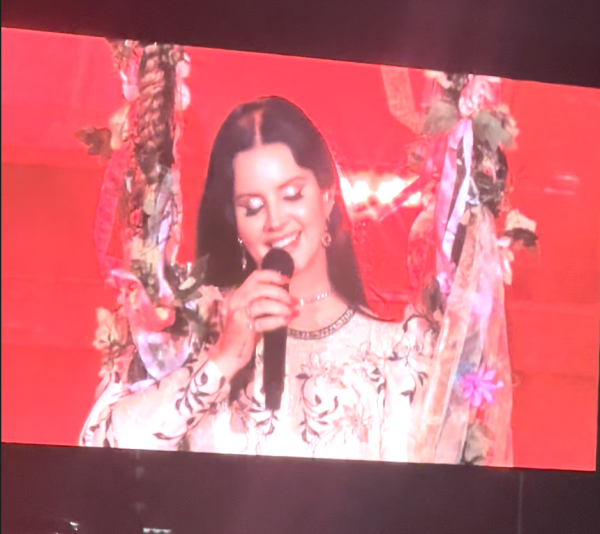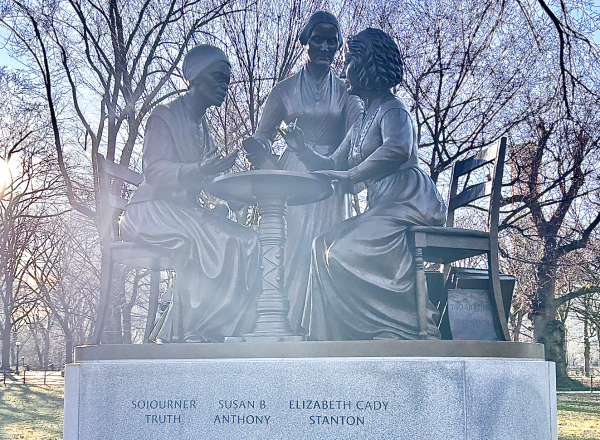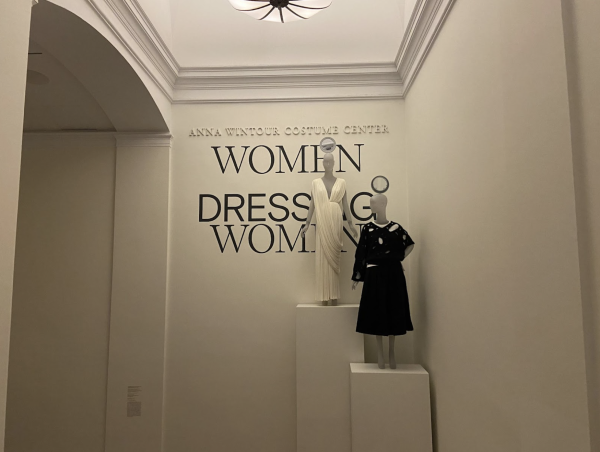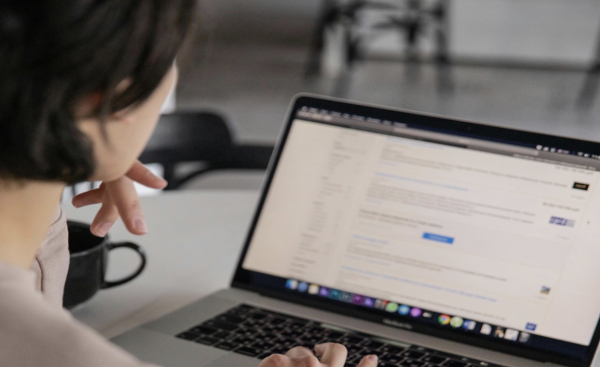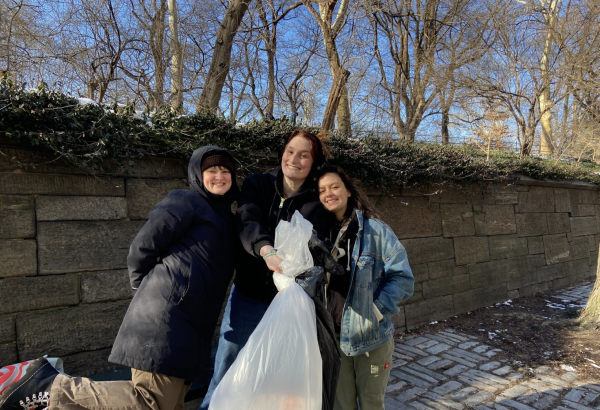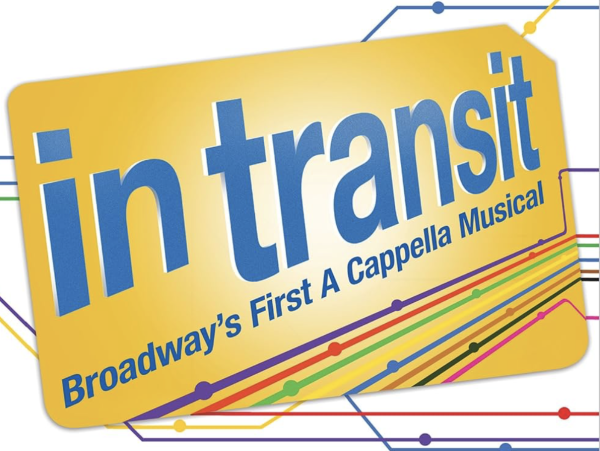Life Without Live Music
College Students Cope Without a Prominent Aspect of their City Experience
July 2019: The Marìas’ concert at The Bowery Ballroom. Prior to COVID-19, audience members could stand mask-less, shoulder-to-shoulder with strangers. Photo by Maria Collins.
Doors open at seven o’clock … line starts forming at six o’clock. Metal barricades provide inanimate direction for crowds to form a snaking queue along the city sidewalks. In icy winter weather, attendees sport layers that they prepare to shed, the bottoms of which look more suitable for summer. Soon, a barren concrete floor will be erased from all visibility by a packed crowd, filled with strangers bumping shoulder-to-shoulder with someone to whom they may never speak. A uniform sway will take over the crowd as the amplifiers ignite with vibrating tones and the percussion sends a pulse through the air.
In New York City, this scene was commonplace, as live music events could be found nightly in every neighborhood. The mobile application Bandsintown once listed dozens of concerts daily, varying widely by musical genre and location. Prior to the COVID-19 pandemic, students attending college in the city often spent their free time seeking out their favorite musical artists or frequenting a local venue to discover a new artist. Especially for younger students who had not yet reached age 21, concerts provided a lively weekend experience accessible for any age.
As the pandemic forced concert venues to lock their doors and remove their posters listing upcoming acts for the 2020 season, college students lost an aspect of life that had become so routine due to its abundance and accessibility in New York City.
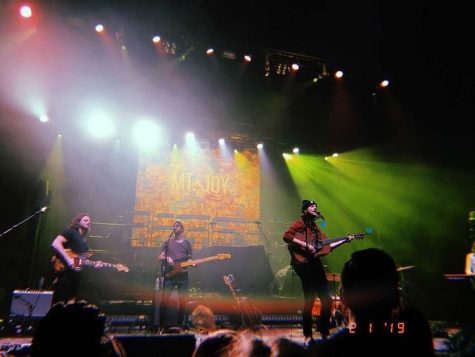
“I honestly would say I tried to go to a show almost every other weekend pre-COVID while living in [New York City],” says Bee Kelly, a current Marymount Manhattan College student. Kelly frequented notable New York concert venues, including the Hammerstein Ballroom, Madison Square Garden and The Knitting Factory. Along with attending concerts in the city, Kelly also worked at Merriweather Post Pavilion, an outdoor venue in Maryland, prior to their college experience.
“I’ve spent quite a bit of time around live music and it definitely feels like a huge part of my life is missing now,” Kelly says.
“Live music events were a place I could go with friends or even alone to socialize and meet new people,” says Hannah Matheny, a student and model based in New York City. Matheny would attend small music events hosted by friends of friends, allowing her to expand her social circle and meet new people involved in a variety of artistic fields.
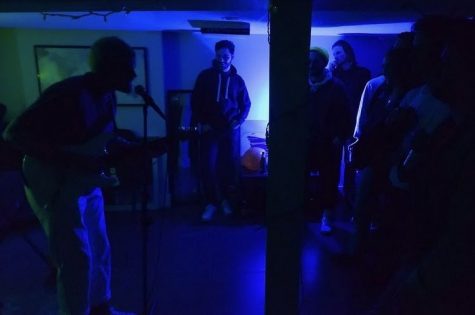
Elias Rivera, a senior at New York University studying film/television, has such a strong affinity for live music that they joined forces with their roommate and opened a homemade music and arts venue in their basement before COVID-19 lockdowns.
“I just really love live music and the culture of it in NYC, like the way musicians take to the parks, streets, and subways,” says Rivera.
Not only does live music play a vital role in the daily lives of New York City college students, it also contributes greatly to the artistic endeavors of these students, many of whom are studying art in the higher education setting. Whether it is choreographing to a newly discovered song or writing a poem inspired by an event, live music is a driving force of artistic inspiration.
“I’m constantly trying to dig deeper into the underground music world, and when I find new music that sparks the choreographer in me again, I go from there and just create as much as I can while I’m in the flow of it,” says Kelly. Kelly continues to find creative inspiration despite the ability to discover a new artist in a live setting.
Although college students are still missing these vital live music experiences, they have discovered ways to cope with the absence of weekly concerts, continue to find inspiration, and attempt to recreate the feelings a night of singing along with a crowd of hundreds of people once brought.
“I have mini concerts in my bedroom, just dancing around with my Airpods in at full volume like I am in a personal mosh pit,” says Matheny. Her time spent inside during lockdown allowed her to spend hours scouring through Spotify, discovering more new artists than she ever has before.
Rivera notes that although touring acts have stopped due to COVID-19, they continue to source or even stumble upon live music throughout the city.
“I’ve noticed that I personally have turned towards what’s nearest. Local acts in the park, or the saxophonist on the subway, or my own friends and neighbors. Those experiences can feel as divine as the ones that are carefully curated, sometimes more so because of that nearness,” says Rivera.
Live music events will continue to look different as they return in increasing numbers. However, the experiences and emotions brought about by concerts will forever remain, no matter what capacity music is presented.
Rivera notes: “I’ve never felt more present than at certain live music experiences, but the truly beautiful part is being able to share in that presence with people who are in the same space [and] feeling the same vibe… it’s all love.”

